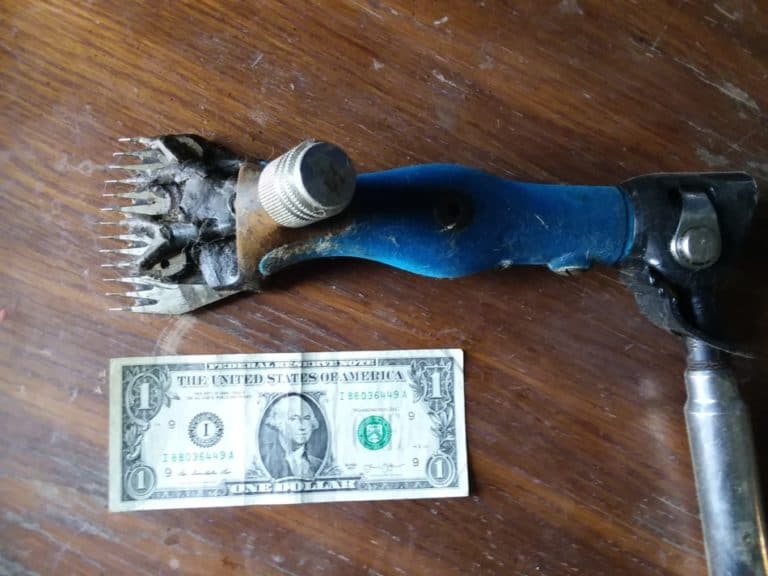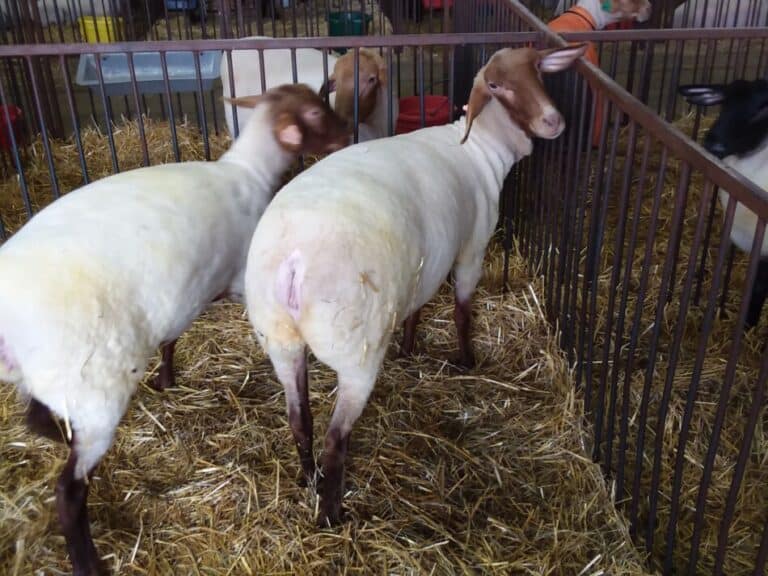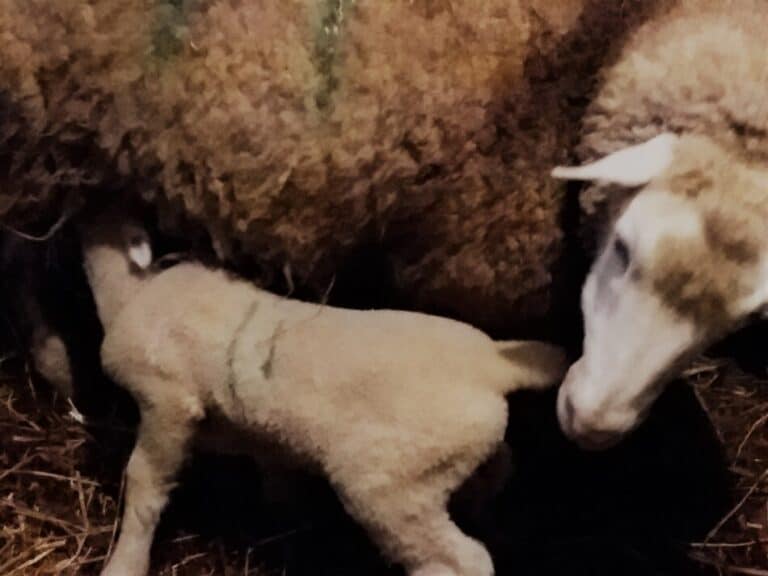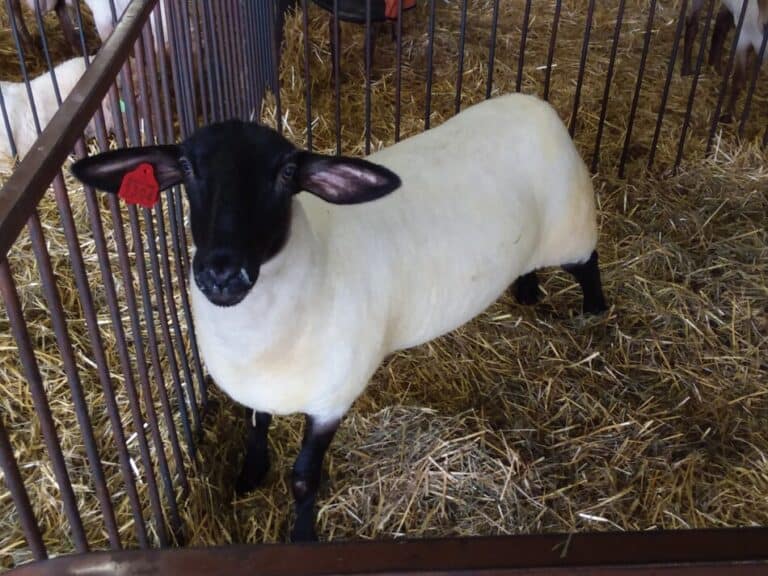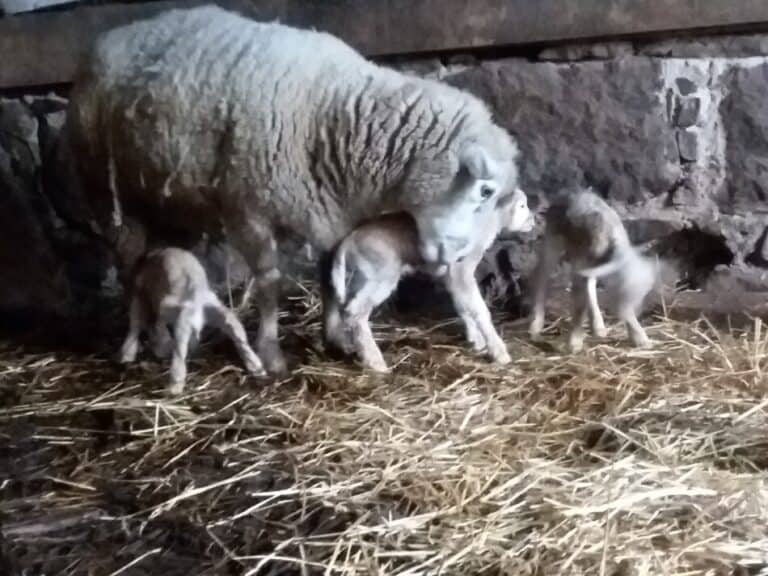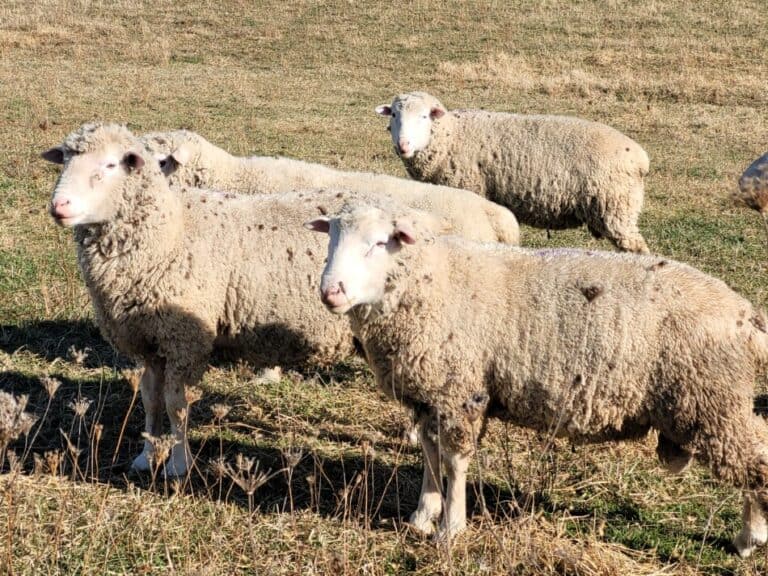How To Get Started Raising Sheep
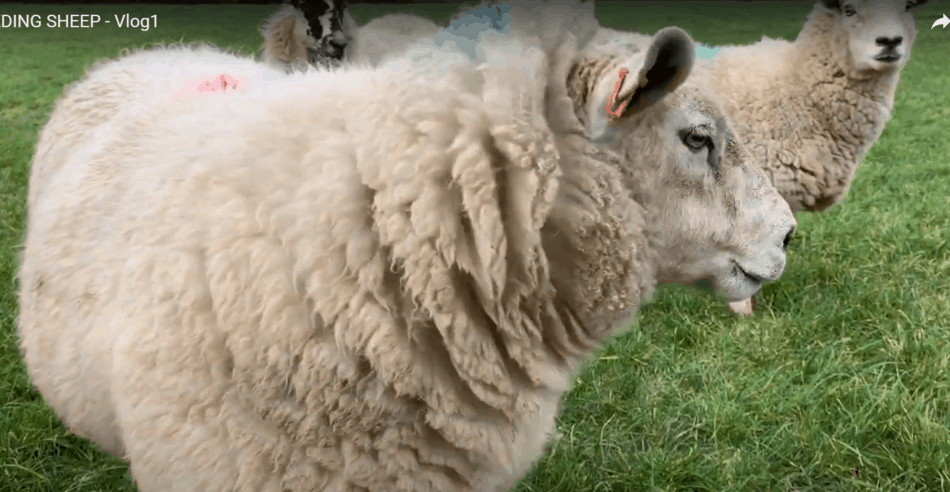
An easy way to get started with sheep is to find a flock you like, get some of those sheep and do what that sheep owner is doing. The good news is, this would be easy, the bad news is you may not like what you get!
A better way to get started with sheep is to spend some time figuring out which sheep will work best for you, your farm and your management. This will take a little more thinking on your part, but will give you much better results.
Raising Sheep For Profit goes over the numbers you need to know when considering starting a sheep business. I use numbers from our flock and show you how to find the information for your area.
Know what your sheep are going to eat
Plan what your sheep are going to eat for the year. What feed sources are available to your sheep on or close to your farm? The most common answer here is pasture for the summer and hay in the non growing season.
If you have plenty of pasture, this is easy. Sheep do really well grazing.
You could own the grazing land or just have access to it by renting or leasing the pasture. Either way, the main thing to figure out here is what are your sheep going to eat.
If you need to buy hay, where is it coming from? Do you have a local hay auction or are there local farmers advertising hay for sale online?
1st or 2nd Cutting Hay? goes over a bit about different types of hay and how to identify what you need for your sheep.

Know where your sheep are going to live
If you are planning to raise sheep on pasture for the majority of the year, then you already know the answer here, but if your sheep need a building of some sort do you have it?
To be clear, sheep do not need always need a building (it depends upon your location), but sheep do need shelter. Shelter could be in the form of wooded areas, hedge or shrub wind breaks, as well as a shed or barn.
If you are planning more of an indoor sheep operation, especially if you are lambing any time other than in good weather, you’ll need an open area that is sheep friendly.
Plan for a ram area, space for at least one flock of ewes (you may want to split off the ewe lambs into their own flock) and a grow out area for lambs if you are feeding them after they are weaned.
Lambing indoors also requires a different set up, you are going to need lambing jugs (individual lambing pens) and a place to put the ewes with new lambs, in addition to the soon to be moms pen.
Pros And Cons Of Raising Sheep is an overview of some things you should consider when thinking about sheep farming.
We have our main flock of ewes outside, year round. But they still need to come into the barn for shearing, deworming the lambs twice in the summer and to sort off the lambs.
We also feed the lambs inside for a few months after weaning. This is not a common practice in our area, but it gives us better lambs (bigger and no parasite problems) at a time when there are not many lambs selling.
This requires barn space. I’m not saying you need to feed out weaned lambs, I’m saying that if you want to feed the weaned lamb separately from the rest of the flock, you’ll need a lamb friendly space to put them.
Know how you’ll make money from your sheep
You need to know how you will make money from your sheep.
Unless you have a flock of wethers, castrated males generally kept for specialty wool production, you’ll be having lambs, so each year your flock will grow.
This means you need to figure out your plan to sell some of your extra stock. Sheep numbers can multiply faster than you might think!
Most sheep farmers sell lambs for income
For most people, making money off of their flock involves selling lambs, usually market lambs, for meat. While this may sound basic, it’s actually a bit more involved, since you have a few more choices to make.
Things you need to think about if you plan to sell market lambs:
- where will you sell lambs (auction, privately, directly to a processor)
- what size lambs you plan to sell
- what type of lambs
- when are lambs selling well in your area
- when are lamb prices low in your area
- if you are custom selling lamb, what do eaters in your area want?
A few other options for making money off of your sheep include occasionally selling breeding stock, custom grazing and specialty wool sales. I’m sure there are more ideas, this is just a few to get you thinking.
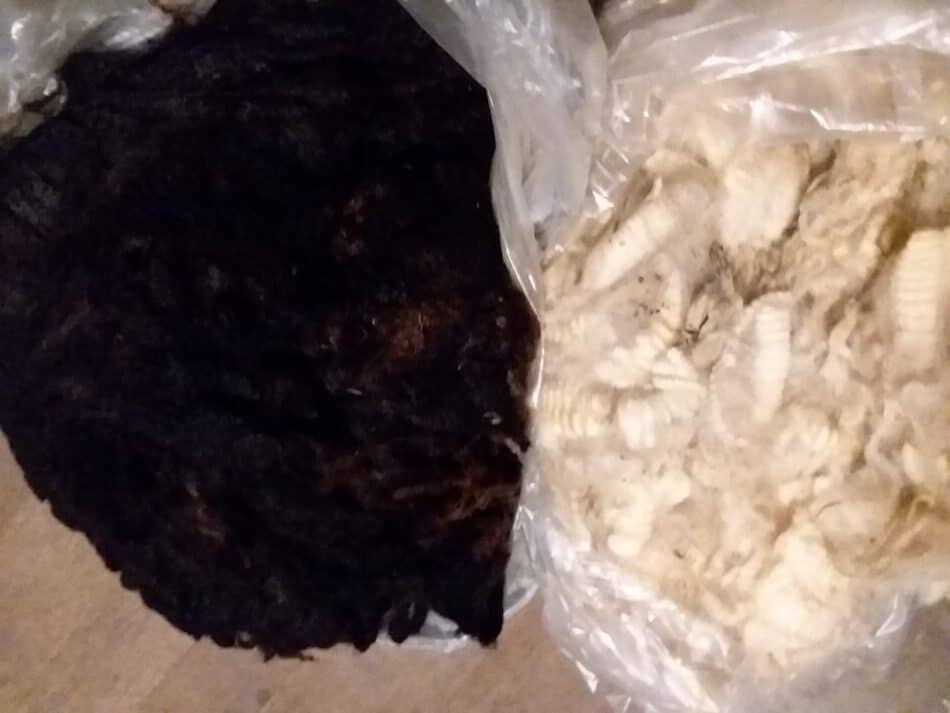
Wool is very unlikely to be a money maker for you
A caution on wool sales, wool is not selling well, at all. We just got $0.05 per pound for our wool. Granted, it’s commercial grade wool, nothing special, but that’s low.
Specialty wool sales are doable, but you must have what people want in a form people want it.
Unless you have a high demand fleece that you are willing to do extra work to keep nice through out the year, do not plan to get much from most wool.
If you have plans to sell specialty wool, get in touch with a successful shepherd who is selling specialty wool and get the full scoop.
Even if you are planning a hobby flock, where you don’t care too much if they make money or not, you’ll still need to sell some sheep eventually.
Where To Sell Your Wool is an article I wrote that goes more into your wool options.
Choose ideal lambing season for your sheep operation
A final thought on getting started with sheep is when is it that you plan on lambing? Most sheep will reliably lamb in the spring, but not at other times of the year.
If you plan on having spring lambs, no problem, spring is the easiest time to have lambs.
If you want out of season lambs, you need breeding stock that will do it. Out of season lambs tend to bring more money when sold and will spread out your income, if you have a few lambing groups per year.
But this is also more work to handle multiple lambings per year and out of season lambs require better feed, since they are not on good pasture.
Lambing Season: What To Expect will show you the things you should plan for and have ready for a successful lambing.
Choose breed (or cross) of sheep that fits your farm
Now that you know what your sheep are going to eat, where you are going to put them and when and what you are going to sell, finally we move to selecting the actual sheep.
If you skipped ahead to read this section first, go back and read the first part of this article before continuing. You can’t pick breeding stock that will work for you and your farm until you have an idea of what you need. Go back to the top.
Easy Breeds Of Sheep For Beginners gives a few breeds of sheep that are pretty reliable choices for nearly anyone.
For everyone who has read through the whole article, make a list of the things you need from your sheep.
List out ease of handling, adapted to your area, specifics about shape or size, or any other characteristic that is important to you.
Now pick your priority. There can be only one priority.
If you are like me, this is hard, but trust me and really dig deep into what you need (not what you want) and think. What traits or characteristics will serve you the most?
Once you have your priority, choose the breed or cross that is most likely to give you the results you want.
A word of caution: breed associations and groups love their chosen breed, which is good but can make them amplify the good and gloss over the not so good.
Associations or groups can be a good place to start, as long as you confirm the results with data from the breeder you intend to buy from.
Please note, there is no perfect breed. I’m not for or against purebred sheep, and to be upfront, you shouldn’t be either. I’m for you getting started with the sheep that are likely to work for you.
You need to pick what works for you and your situation. Your ideal sheep could be exactly what your neighbor has or not, it depends upon what you are wanting and willing to do with your flock.
Look for breeding stock of your chosen sheep
It’s finally time to look for breeding stock! Take your time here and ask about the operation once you find a potential source flock that you like.
For you to get the results this shepherd is getting, you must do the things s/he is doing. Are you willing to: feed grain, pull lambs, move fence daily or whatever else this flock needs?
If you like what you see and hear from the shepherd, be prepared to pay a higher than average price for good sheep.
What’s higher than average? Look around at market reports for your area and at least know the current lamb prices. Read How Much Will My Lambs Sell For?, an article I wrote to show you how to read market reports for lambs.
Quality pays, repeatedly. Buy the highest quality breeding stock you can afford. Good stock has babies that grow well and reproduce well. Cheapo sheep will give you poor results.
For me, if I were selling, I would want the year’s revenue per ewe at a minimum. Not profit from this year, just income.
We’ll use my numbers to give you an example: If market lambs are selling for $225 each and I’m getting 150% lambing, that’s 1.5x$225=$337.50. This means each ewe is bringing in about $337.50 to me, as the owner.
True, costs still need to come out of that, like feed.
Using these numbers, if I were to charge $350 each for ewe lambs, I would feel that is an appropriate price for an average ewe lamb if I am motivated to sell. Ewes would be more since they have a track record of performance.
If you want above average, proven ewes (ewes that have done a good job with their first set of lambs), to specifically pick or I don’t need to sell any, I would definitely charge more.
To be clear, this is just me and how I think of pricing. Other sheep farmers have their own plan and own reasons for selling sheep, so will have their own pricing.
Sheep 101: Selecting Breeding Stock is a good article to also read on getting started. Click around, this site has some good stuff on it.
Build Fence or get portable fence ready for your sheep
Before you get your sheep, have some fence set up! Ideally, you’ll have multiple paddocks (smaller pasture divisions) so you can move your sheep from one section to the next as they eat the grass.
Unload your sheep into a secure pen and give them some time to settle down and get used to their new home before you turn them out onto a bigger area, especially if they have never been on electric fence before.
ElectroNet 9/12/35 is a review of the netting we use, I give you the good and the not so good, if you are thinking about using netting for your sheep.
If you are using electric fencing, like netting, be sure to have enough netting to make the current paddock plus the next move all at the same time.
Just enough netting for today means you have to let the sheep out to move them! Not a good plan.
You want to leap frog netting, so set up today’s paddock and the next one. When the sheep move to the second paddock, take down the first paddock and move it past the second (where the sheep are now) to make the third move.
If you are fortunate enough to have extra netting, set up more paddocks than just two. If you are tight on netting, you’ll need to leap frog it to move the sheep. This is what we do, we are always rearranging netting in the summer.
Plan to spend time with your flock
Plan to spend time observing your flock. Give them space until they get used to their new home and you and your ways of doing things. Once they are settled in, now it’s your job to get to know them and figure out what’s normal.
Once you know what’s normal for your flock, now you can spot when things, for the group or the individual sheep, are abnormal and see what you can do to fix the situation early. This is the key to successfully raising sheep.
Sheep will occasionally have problems and tend to be good at hiding them, so you have to keep a sharp eye out for oddities. Quick action on your part saves sheep, waiting until the problem is obvious makes recovery harder.
If you would like another opinion on getting started with sheep read How To Get Started With Sheep by Ulf Kintzel for Cornell Small Farms Program.
Image Credit: featured image of ewe looking to the right is from The Sheep Game (YouTube)
